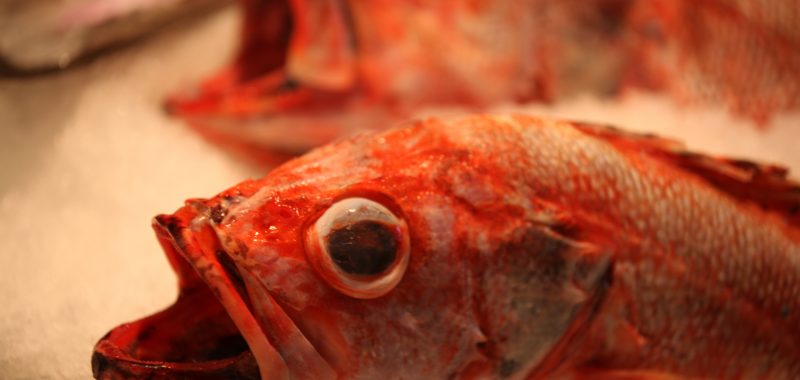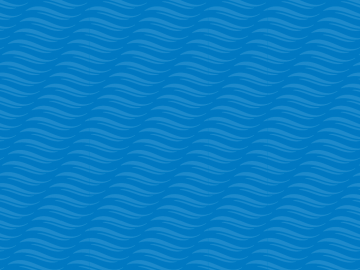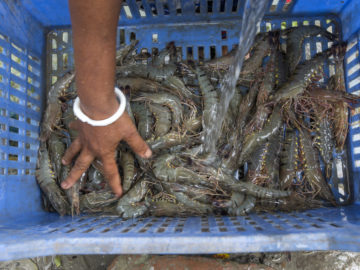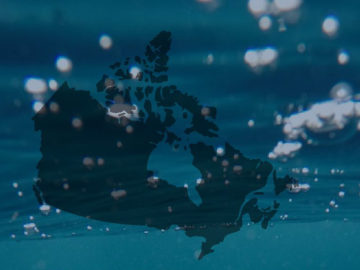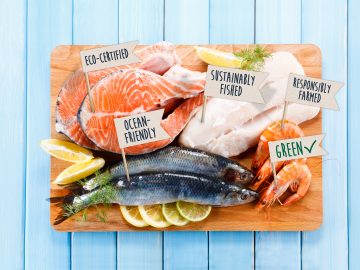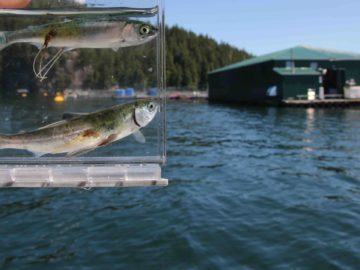We must keep the sustainable seafood industry AND the environment healthy through the COVID-19 era.
The past few weeks have been incredibly challenging for individuals and companies across the world as the COVID-19 pandemic disrupts our daily routines and business operations. Some segments of the Canadian seafood sector have taken a hard hit. With uncertain support packages, regulatory challenges and new buying patterns, it is imperative that we figure out how to help businesses, fishing communities and the environment survive now and prosper long-term.
Vendors of fresh products such as oyster, snow crab or lobster and producers who supply restaurants and food service are clearly struggling. Their buyers are on hiatus or have significantly scaled back – leaving many producers, distributors and wholesalers with no one to sell to. Segments geared towards selling to retailers, like the farmed salmon supply chain, seem to be faring better (at least in the short term) due to the increased spending in grocery stores across Canada and the US as people are cooking much more at home and the decreased availability of imported products due to the reduction in air travel.
The Canadian government has declared seafood production an essential service during the COVID-19 pandemic but the details of how, where, and to whom the government allocates its support will determine whether sustainable fisheries and local food access and security are effectively supported. The Government recently (April 25) announced specific measures aimed at helping the seafood processing industry continue to operate and protect the health of their workers. There are also supports available for fishermen, but there is significant confusion about how the Government will apply them, especially for inshore, independent harvesters. This sector is facing a difficult choice; many operators are considering not fishing this season because they are concerned about the health of their crew and the lack of market for their fish – but then they may not qualify for government support benefits since they have “chosen” not to perform their essential service (fishing). Alternatively, they can fish and receive below-cost prices for their catch, because their buyers have limited reselling options, potentially driving them further into debt. The Fisheries Minister, Bernadette Jordon, has already indicated she will continue to work on more measures aimed at harvesters (update: on May 14th, Prime Minister Justin Trudeau announced a nearly $470 million package to support fish harvesters).
In addition to making sure that businesses stay afloat until the pandemic subsides, we need to make sure that the environment is also protected. After all, a healthy marine environment also provides essential services to humanity in the form of climate regulation, sustenance, recreation, medicine and inspiration. But there have been mixed reactions from seafood industry to the proposed changes.
The Canadian Aquaculture Industry Alliance sent a letter to the Fisheries Minister with a suite of asks, including “regulatory flexibility”, and lists as examples the requirement to conduct sea lice counts on farms or compliance with the Aquaculture Activities Regulations. These requirements are designed to minimize and mitigate the impact of salmon farms on the marine environment and wildlife – not to mention the welfare of the farmed fish. Now would be a particularly bad time to release farms from their responsibility to monitor sea lice levels because wild juvenile Pacific salmon are currently migrating past B.C. salmon farms where they are vulnerable to potentially unchecked sea lice loads, viruses and other effluent that could be lethal. In Nova Scotia, the herring, gaspereau (also known as alewife), eel and mackerel runs will also be passing salmon farms and facing similar concerns.
While some sectors demand fewer environmental requirements, other sectors are concerned about a relaxation of requirements. When DFO announced that fisheries observers wouldn’t be allowed on commercial fishing boats for 45 days due to challenges with physical distancing onboard vessels – the B.C. groundfish trawl fleet expressed alarm for what that could mean for the protection of the stocks they fish. It’s been reported that the Groundfish Trawl Advisory Committee (GTAC) wrote to DFO recommending, among other things, that an electronic monitoring pilot project be expanded to all vessels before they are allowed to fish and that the plan to start retaining 100% of rockfish catches on May 15th be enacted immediately. The industry association and government acted quickly and on April 14th DFO and GTAC announced the implementation of an emergency electronic monitoring project to ensure coverage throughout the duration of the suspension of human observers due to COVID-19. This proactive response is encouraging. While environmental groups welcomed the move to protect observer health and understand the necessity of suspending their work on boats at the moment, they also note it is imperative for DFO to step up monitoring of fishing vessels in fleets that haven’t adopted electronic monitoring and ensure data collection requirements are met by other means during this time.
In addition to environmental and business concerns, the pandemic is bringing to light the vulnerability of our current seafood market system as a whole. Canada exports over two-thirds of the seafood it produces and the majority of seafood that Canadians eat has been imported. This includes products that were caught or farmed in Canada, exported to another country for processing (usually somewhere far away, like China) and then re-imported. These trends are driven by market dynamics; overseas markets are willing to pay more than Canadians for our seafood and many Canadians want to eat seafood that we don’t produce domestically (like tropical farmed shrimp and prawns). We import seafood products that were harvested in Canada and shipped halfway around the world to be processed in countries with lower wages. The disruptions caused by COVID-19 are showing the weaknesses in these complicated systems, both from a business angle and a domestic food security perspective.
And speaking of domestic food security, SeaChoice wants to thank everyone in the seafood supply chain for doing what they can to keep Canadians supplied with sustainable seafood – from inshore fishers going out in day boats to land the catch of the day, workers continuing their shifts in processing plants, and businesses that are getting creative with how they get sustainable seafood to people (for example, Organic Ocean in BC’s lower mainland and Afishionado Fishmongers in Halifax, NS). We salute you.
SeaChoice will continue to monitor the impacts of the pandemic on the Canadian seafood supply chain as we move from the initial stage to longer-term solutions. We hope everyone out there is staying safe and physically distancing as much as possible so that we can all get back to life as usual – or perhaps even slightly improved – before too long.
